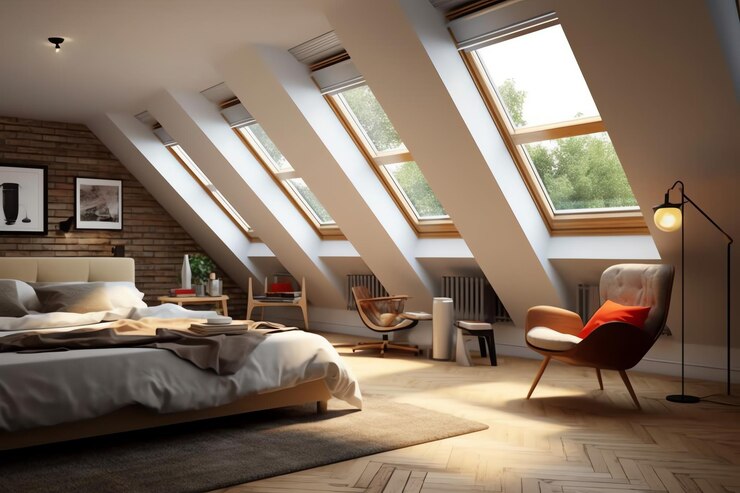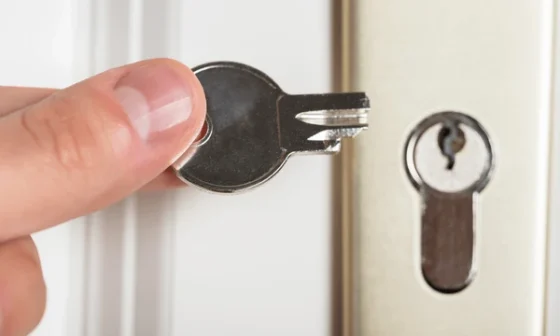
Loft conversions are an increasingly popular home improvement project, offering a fantastic way to add extra space and value to your home without the need for extending the property’s footprint.
Whether you’re dreaming of a new bedroom, office, or playroom, understanding the costs involved is crucial for turning your vision into reality.
Critical Cost Factors for Loft Conversions
Several key factors will influence the overall cost of your loft conversion project. Recognising these early can help you budget more accurately.
Conversion Type
The type of conversion you choose is a significant cost determinant:
- Velux: Incorporates windows into the roofline and is generally the least expensive option.
- Dormer: Extends the roof to create more headroom and floor space, typically costing more than Velux conversions.
- Hip-to-Gable: Extends the roof’s side to turn a sloping side into a vertical one, suitable for semi-detached homes.
- Mansard: The most extensive option, replacing the roof structure to create a flat roof and increasing space significantly.
Project Scale and Complexity
A larger scale and more complex conversion will naturally incur higher costs. This includes the size of the space, structural changes, and any bespoke features or finishes.
Finishing Standards
The level of finish you opt for – standard to luxury – will also impact your budget. High-end finishes and fixtures can significantly increase costs.
Regulatory Compliance
Ensuring your conversion complies with local planning permissions and building regulations can introduce additional costs, from application fees to potentially hiring architects or surveyors.
Estimating Your Loft Conversion Costs
While costs can vary widely based on the factors above, here are some general estimates to guide your planning:
- Velux Conversions: £15,000 – £20,000
- Dormer Conversions: £30,000 – £40,000
- Hip-to-Gable Conversions: £40,000 – £50,000
- Mansard Conversions: £45,000 – £70,000
For more precise figures tailored to your specific project, using a detailed loft conversions calculator like the one provided here on the WhatPrice website is highly recommended.
Budgeting Wisely
Investing in a loft conversion not only provides the immediate benefit of extra space but can also significantly enhance your property’s value. To ensure a good return on investment:
- Plan meticulously, focusing on both functionality and aesthetics.
- Budget for unforeseen expenses by setting aside an additional 10-15% of your total projected cost.
- Choose materials wisely, balancing cost with durability and appearance.
- Consider DIY for aspects of the finish you’re confident you can handle, but always consult professionals for structural, electrical, and plumbing work.
Optimising Your Loft Conversion Plan
Engaging with professionals early in the planning process is crucial. Architects and loft conversion specialists can offer valuable insights into what’s achievable within your budget, ensuring your project is both innovative and compliant with local regulations.
Defining a detailed project scope is essential to prevent cost overruns. This scope should encompass structural changes, electrical and plumbing needs, insulation, and finishes. A well-defined project scope aids in obtaining accurate quotes and serves as a guide throughout the conversion.
Moreover, considering future needs during the planning stage can save you time and money in the long run. Think about how the space might be used differently in the future and plan for flexible designs that can accommodate these changes.
Hidden Costs and Budget Buffers
Unexpected expenses are common in any significant home improvement project. Identifying potential hidden costs early, such as structural reinforcements or upgrades to your home’s existing systems to handle the new space, is important. Allocating a budget buffer can mitigate these surprises, ensuring your project doesn’t stall due to financial constraints.
The Value of Quality
Investing in high-quality materials and craftsmanship not only enhances the durability and appearance of your conversion but can also contribute to the overall value of your home. While it may be tempting to cut costs by choosing cheaper materials or labour, this can lead to higher maintenance costs and lower quality of living in the long term.
Conclusion
A loft conversion is a substantial project that, when well-executed, adds significant value and space to your home. Understanding the various factors that influence the cost, and carefully planning and budgeting for your project, can ensure a smooth process and a successful outcome.
Using tools like the detailed calculator linked above provides valuable insights into your project’s potential costs, helping you make informed decisions every step of the way.
This guide aims to provide you with a foundational understanding of loft conversion costs, ensuring you’re well-prepared to navigate the complexities of your project. With careful planning, budget management, and professional guidance, your loft conversion can become a valuable addition to your home, enhancing both your property’s value and your quality of life.

